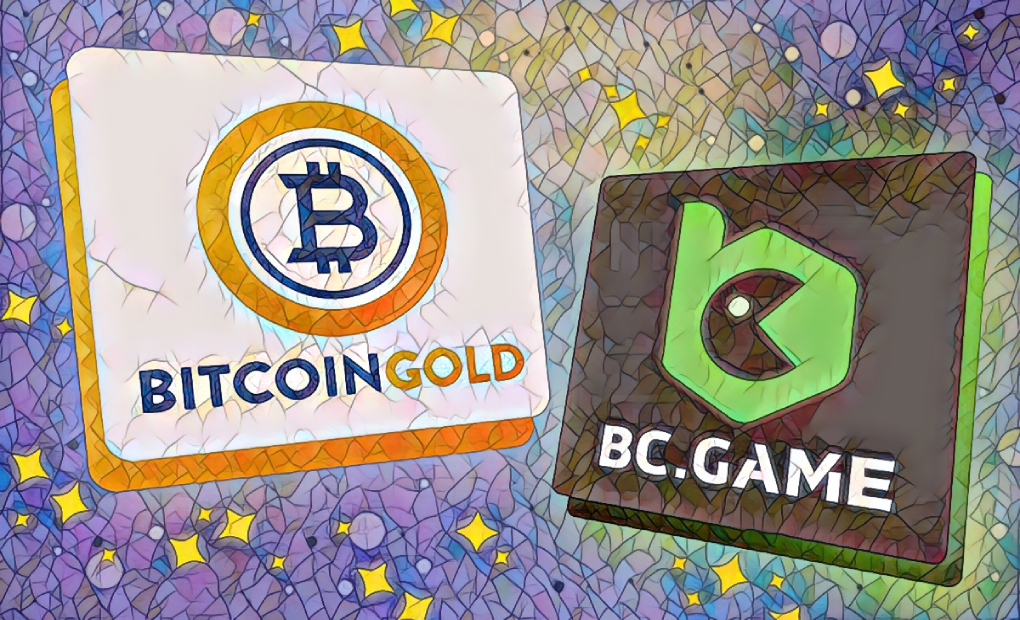Decentralised cryptocurrencies rely on vibrant communities to run and upgrade the project. These communities often have diverse opinions, some leading to irreversible splits in the blockchain trajectory. Bitcoin has a handful of such splinter coins, one being BitGold, which is now listed on BC.Game. Directional splits in a blockchain are called forks. Where the fork is simply for purposes of an upgrade or correction, it is called a soft fork. There are instances where these splits are major, with some members of the blockchain community taking a fundamentally different view from the rest of the community. These splits are called “hard forks.” Bitcoin Cash is the most famous and most successful Bitcoin fork. Others like Bitcoin SV and Bitcoin Gold also hold their independent coins.

Exploring Bitcoin Gold: How Did It Come About?
Bitcoin is famous the world over as the original open-source cryptocurrency. Satoshi Nakamoto, its mysterious founder, intended it to be a peer-to-peer digital currency. As Bitcoin got more popular, the currency aspect became overshadowed by its value as a speculative asset. This duality of purposes led to inevitable philosophical differences between those who wanted Bitcoin to revert to its founding ideals as a peer-to-peer digital currency and those who wished to maximise the value of their holdings. Bitcoin Cash split from the original Bitcoin blockchain in August 2017, with a group led by activist Roger Ver taking a different course. Just over one month later, in October 2017, the Bitcoin Gold hard fork came about. Why? You may ask. Bitcoin Gold had a specific purpose: “to make Bitcoin decentralised again. “ See, Bitcoin Gold leaders took exception to advances in Bitcoin mining. Since 2013, Application-specific Integrated Circuits (ASIC) have taken over Bitcoin mining. The ASIC rigs advanced fast, and soon after, a few dominant mining companies emerged. Bitcoin was supposed to have decentralised mining with computers spread out globally, helping to secure the network. A few large mining companies controlled most of the Bitcoin mining hash rate in this arms race. The core team, led by lead developer Hang Yin decided to chart a different course. Bitcoin Gold hard fork officially took place on October 24th 2017, at block height 491.407. Bitcoin Gold retains the maximum supply of Bitcoin at 21 million. This feature is one of the commonalities of the two blockchains and holds for Bitcoin Gold.
A New Mining Algorithm
A key goal of the newly forked blockchain was to prevent such commercialisation and centralisation of the mining as was present in Bitcoin. The Bitcoin Cash community took inspiration from the cryptocurrency Zcash in implementing an algorithm that would prevent ASIC miners from gaining a foothold. This algorithm is called Equihash- BTG, which modified Zcash’s consensus algorithm to suit the needs of this blockchain. The new consensus would cut the influence of significant mining corporations with sophisticated equipment. The algorithm excludes ASICs by requiring more memory than ASIC rigs can muster. However, it can run fine on most graphic cards and even some computers. This reversion to Bitcoin mining’s humble beginnings is the essence of decentralised Bitcoin mining. That said, Bitcoin Gold is very much in the shadow of its mother coin, still the dominant cryptocurrency in the world. Therefore, this coin has the theme of cutting the influence of large-scale miners on Bitcoin. Allowing more people to participate in mining on a relatively equal footing entrenches decentralisation
Creating Separation from Bitcoin
Well, the coin had to be about more than just curtailing the influence of large-scale miners. Bitcoin Gold developers aimed to add more security features and transparency to the project. Ironically, it has suffered two major 51 percent attacks, which threatened the reputation of this blockchain. Like Bitcoin, it retains the open-source ideals that are the basis of decentralised, transparent blockchains. The development team created a unique wallet address for BTG to prevent double-spend. Bitcoin Gold has close to 100 nodes spread in dozens of locations globally. It has a listing on most major exchanges and retailed for about $22 at press time. Bitcoin Gold combines the fundamental aspects of Bitcoin with a unique approach to blockchain development. The changes to the mining consensus aim to decentralise mining and eventually promote scalability for the everyday use of Bitcoin Gold. Developers can participate in the governance and development of the blockchain. The company intends to entrench decentralisation better than the mother chain, which BCG proponents claim lost its way. Bitcoin Gold relies on Bitcoin Gold insight Explorer to run the full Bitcore node. The Bitcoin Gold Organisation is a non-profit that helps oversee the decentralisation of nodes. Bitcoin Gold introduced the BTGPay service to boost its payment utility. This service aims to connect merchants, services, and integrators with the Bitcoin Gold community. The project has several partnerships and mining pools to boost its profile as a payment coin in regular commerce. Overall, the coin is more cost-effective to mine than Bitcoin. Nonetheless, the development team is still reeling from a 51% attack, a risk for any young blockchain. It becomes harder to conduct such a hack with time and more popularity.
BC.Game adds Bitcoin Gold
Bitcoin Gold is slowly but surely finding its footing after a shaky start. The project seems to have shaken its earlier controversy but has its work cut out in truly transforming Bitcoin’s operational model. Nonetheless, its association with Bitcoin will guarantee decent value for the foreseeable future. BC.Game is adding one of the more notable projects for crypto gambling enthusiasts to have a greater diversity of coins to wager. Whether out of belief in decentralised mining, having an extra coin with decent value, or for speculative fervour, users on BC.Game can now partake in this unique project.
















